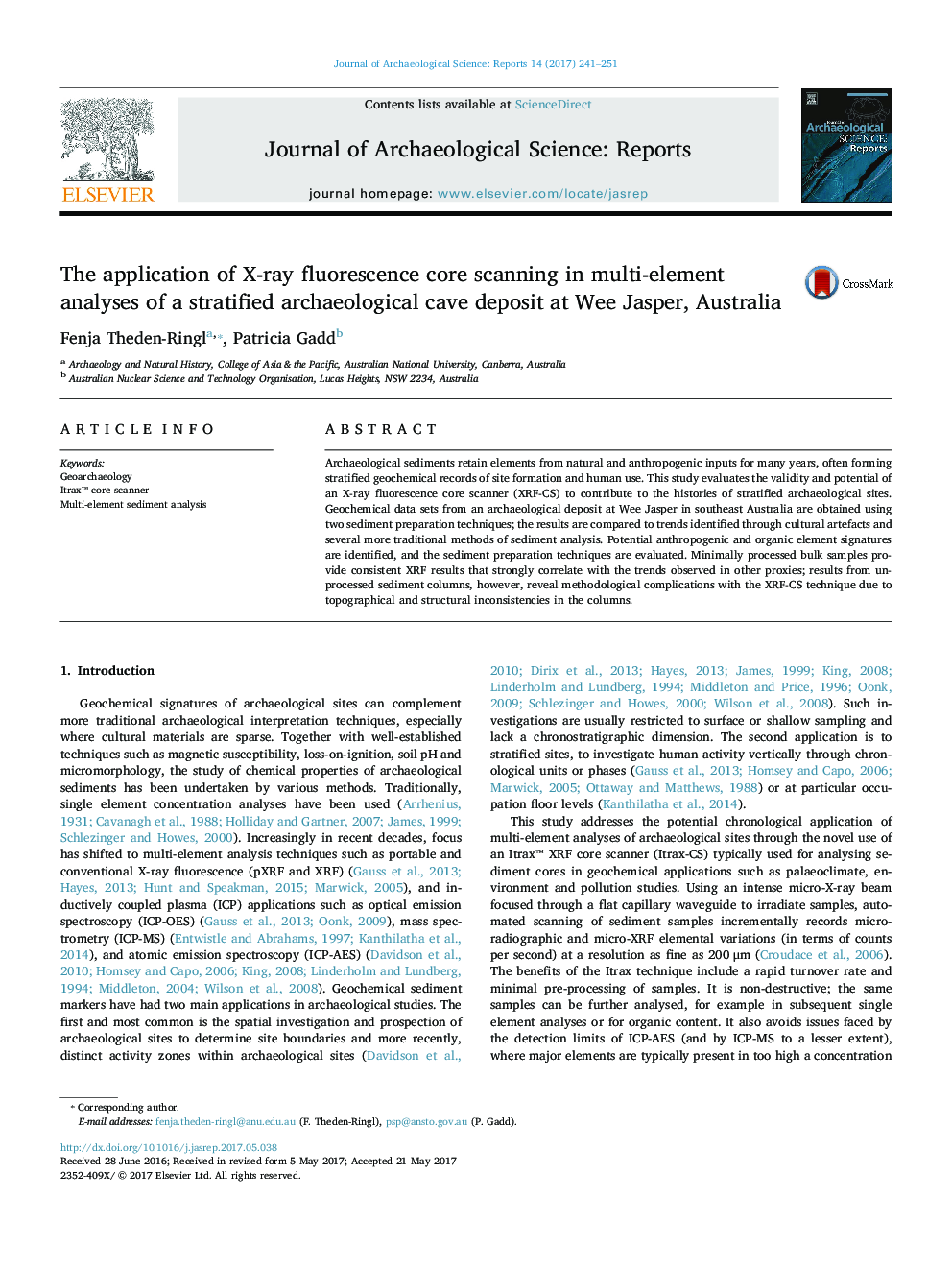| Article ID | Journal | Published Year | Pages | File Type |
|---|---|---|---|---|
| 5112338 | Journal of Archaeological Science: Reports | 2017 | 11 Pages |
Abstract
Archaeological sediments retain elements from natural and anthropogenic inputs for many years, often forming stratified geochemical records of site formation and human use. This study evaluates the validity and potential of an X-ray fluorescence core scanner (XRF-CS) to contribute to the histories of stratified archaeological sites. Geochemical data sets from an archaeological deposit at Wee Jasper in southeast Australia are obtained using two sediment preparation techniques; the results are compared to trends identified through cultural artefacts and several more traditional methods of sediment analysis. Potential anthropogenic and organic element signatures are identified, and the sediment preparation techniques are evaluated. Minimally processed bulk samples provide consistent XRF results that strongly correlate with the trends observed in other proxies; results from unprocessed sediment columns, however, reveal methodological complications with the XRF-CS technique due to topographical and structural inconsistencies in the columns.
Keywords
Related Topics
Social Sciences and Humanities
Arts and Humanities
History
Authors
Fenja Theden-Ringl, Patricia Gadd,
